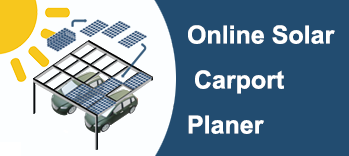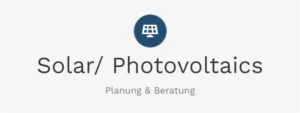New and patented solar installation of the future: Save up to 30% cost & finished faster! Without clamps and screws
Language selection 📢
Published on: August 20, 2025 / Updated on: August 20, 2025 – Author: Konrad Wolfenstein
New and patented solar installation of the future: Save up to 30% cost & finished faster! – Image: Xpert.digital
New: Assemble-ready Solar systems! This patented innovation accelerates your solar construction massively
Revolution in solar system assembly: The future of photovoltaic installation
The solar industry faces a technological breakthrough that could fundamentally change the way in which photovoltaic systems could be installed. Innovative fastening technologies without screws and clamps not only promise dramatic time savings, but also considerable cost savings and improved security for the solar modules.
A new era in the field of PV system construction – the assemble-ready Photovoltaic system
Innovative click systems revolutionize the installation
The traditional assembly of solar modules with numerous screws and clamps is a thing of the past. Modern solar modules are already equipped with integrated linear fastening mechanisms on the frame, which enable completely new assembly philosophy. These patented systems from Modurack use clever click mechanisms that make it possible to easily attach modules to the PV substructure to a rail (hook in) without screwing time.
The principle of this innovation is based on an integrated rail connection between the module and the carrier system. The modules are no longer contaminated by clamps, but are kept evenly on a rail over their entire frame length. This represents a fundamental change in the assembly technology, which significantly reduces both the installation time and the mechanical load on the modules.
Technical advantages of the new fastening technology
The assemble-ready Installation offers numerous technical advantages over conventional fastening methods. In traditional systems, screws and terminals create punctual pressure on the module frame, which can lead to microcracks in in the glass or in the solar cells. These microcracks are hardly recognizable with the naked eye, but can significantly impair the performance of the modules and reduce their lifespan.
The new fastening technology completely eliminates this problem zone. Due to the even power distribution over the entire module frame, local overload is avoided. This is particularly important because silicon cells are very susceptible to mechanical loads due to their crystal structure. The microcracks are mainly caused by improper installation during assembly or wind vibrations during the operating time.
Dramatic time savings in the installation
Up to 43 percent less installation time
The effects of the new assembly technology on the installation time are impressive. Compared to conventional assembly systems with screws and clamps, the assemble-ready solar system saves up to 43 percent of the installation time. This means that a solar system that traditionally needed an entire working week for assembly can now be completed in a significantly shorter time of 2-3 days.
With a typical single -family house system, the installation usually takes 1 day for module fastening. With the new systems, this time can be reduced enormously. This leads to a shortening of the entire project duration by about half a day, since not only is the montage period shortened, but less coordination effort between different trades is also required.
Simplified logistics and modular logic
The modular construction of the new fastening systems follows a modular logic that significantly simplifies the planning and implementation of solar projects. Less different components mean fewer confusion on the construction site and simpler warehousing. The installers can concentrate on the actual installation process instead of spending time by sorting and assigning various small parts.
This standardization also has a positive effect on training the installation staff. Since the systems are more intuitive to handle, less specialized training is required, which in turn reduces personnel costs and increases the availability of qualified fitters.
Significant cost savings
Reduction of personnel costs
The assembly costs make up a significant share of the total costs of a photovoltaic system. In the case of a typical 10 kWP system, around 16 percent of the total costs are pure module fastening. Due to the time saving in assembly, these costs can be reduced by 30-50 percent.
Material cost savings
In addition to the personnel costs, the innovative fastening systems also lead to direct material savings. Fewer screws, clamps and small parts not only mean lower procurement costs, but also reduced storage effort and simplified logistics. The standardization of the components also enables larger quantities to order and thus achieve better shopping conditions.
The modularity of the systems also reduces the costs of planning and project planning, since fewer individual adjustments are required. This contributes to reducing the so -called softcosts, which make up a significant share of the total project costs.
Softcosts: The underestimated cost factor
Hidden costs in solar projects
Softcosts include all indirect costs of a solar project that do not directly related to the hardware. This includes project planning, permits and bureaucratic procedures, sales and marketing, customer acquisition, installation working hours, training, insurance, taxes, financing costs, warehousing as well as after-sales service and monitoring.
This cost category often accounts for over 50 percent of the total costs of a solar system. While the hardware costs for solar modules have dropped dramatically in recent years – the module prices fell 20 percent in 2025 compared to the previous year – the softcosts remained largely constant or even increased. Magicsolar reduces the estimated construction site costs by around 42 % and the office costs by 50 %.
Digitization as a cost driver
The reduction of softcosts requires systematic approaches that go beyond pure assembly technology. Digitization plays a key role. Automated planning processes, digital approval processes and intelligent monitoring systems can significantly reduce soft costs.
Modern planning software enables solar systems to be more precise and avoiding installation errors. This not only reduces the planning costs, but also the rework and warranty cases. Machine learning and extended analyzes can further reduce the costs for construction, development and commissioning.
Advice – planning – implementation
I would be happy to serve as your personal advisor.
contact me under Wolfenstein ∂ Xpert.digital
call me under +49 89 674 804 (Munich)
Shorten construction time, not lifespan – Click. Done. Solar.
- New: Patent from the USA – Install solar parks up to 30% cheaper and 40% faster and easier – with explanatory videos! – Image: Xpert.Digital
- New: Assemble-ready Solar systems! This patented innovation accelerates your solar construction massively
More about it here:
- New: Patent from the USA – Install solar parks up to 30% cheaper and 40% faster and easier – with explanatory videos!
- ModuRack is leading the solar industry from the “panel era” to the “system era”
- Substructure & Installation – Solar systems without clamps: The ingenious trick for faster and more cost-effective installation
Faster, cheaper, safer: The new era of solar installation – How smart mounting systems are transforming solar systems
Technical security and quality improvement
Avoidance of module damage
An important advantage of the new fastening technology is to avoid mechanical damage to the solar modules. Traditional clamping systems can lead to various problems with improper installation. Glass fractures often arise from too much torque on the screws and even with "correct" installation.
The microcracks in the solar cells are a particularly tricky problem because they are not visible and often lead to performance loss after years of installation. They arise from mechanical loads during transport, installation or weathering. The uniform distribution of strength of the new fastening systems minimizes these risks considerably.
Long -term service security
The improved mechanical integration of the modules into the carrier system leads to a higher long -term stability of the systems. By avoiding pointing tensions, not only does microcracks prevent, but also reduce the likelihood of glass breaks and other aging -related damage.
This is particularly important against the background of the longer warranty times that offer modern solar modules. Many manufacturers today grant 20-25 years of performance guarantee. The improved fastening technology helps to ensure that these guarantee promises can actually be adhered to.
Market development and industry trends
Growing pressure on installation capacities
The global solar market is growing rapidly. In 2024, photovoltaic systems with an output of around 440 gigawatts were installed worldwide. This corresponds to over 30 million new solar systems. The strong growth leads to a considerable pressure on the available installation capacities.
The demand for qualified installers far exceeds the offer. At the same time, personnel costs are continuously increasing. In this situation, more efficient assembly techniques offer a decisive competitive advantage and help to compensate for the shortage of skilled workers.
Standardization as a key to success
The photovoltaic industry is developing from a manual sector to an industrialized industry. Standardization and modularity are central success factors. The new fastening systems follow this trend and make the solar installation more predictable and efficient.
This development is supported by the regulatory changes.
Effects on different market segments
Advantages for private households
For private customers, the new technologies primarily mean lower installation costs and shorter construction times. With typical home installations, the assembly costs can be reduced by 1,000 to 2,500 euros. This makes solar systems attractive for a wider layer of home owners.
The shorter construction time also reduces the burden for homeowners. Less noise, less dirt and a faster return to normality significantly increase the acceptance of solar installations. This is particularly important in densely populated areas, where construction work can quickly lead to neighborhood conflicts.
Commercial and industrial applications
In the commercial area, the advantages are even more pronounced. Large roof systems can often only be installed on weekends or outside of business hours so as not to disturb the operation. The shortened installation time makes it possible to install large systems in a single weekend.
For industrial companies, minimizing operating interruptions is a critical factor. The new assembly technology not only reduces the installation time, but also the risk of delays due to weather influences or technical problems.
Challenges and limitations
Compatibility and transition period
The introduction of new substructures for solar modules also brings challenges. Not all existing systems are compatible with the new modular types. This requires a transition period in which both old and new systems have to be used by the installer.
The training of the installation staff is another important aspect. Although the new systems are easier to use, the installers still have to be familiarized with the specific properties and requirements.
Quality control and standards
The simplification of assembly must not be at the expense of quality. It is important that there are also strict quality controls with assemble-ready N photovoltaic systems. The development of corresponding standards and certification procedures is therefore of crucial importance.
Liability issues for new technologies must also be clarified. Manufacturers, installers and insurers have to develop solutions together that promote both innovation and ensure appropriate security standards.
Future view and potential
Technological development
The current developments in fastening technology are only the beginning of a more comprehensive transformation of the solar industry. Future innovations could also enable further automation. Robot-based installation, precise positioning systems and intelligent assembly aids will further increase efficiency.
The development of assemble-ready Solar systems is a paradigm shift in the photovoltaic industry. The combination of dramatic time savings, considerable cost savings and improved technical security makes this innovation a key factor for further development of solar energy in Germany.
Market transformation
The new fastening technologies are expected to lead to consolidation in the installation market. Companies that rely on the new technologies at an early stage will achieve competitive advantages. At the same time, smaller installers could get new market opportunities through the simplified processes.
Standardization will also enable the development of new business models. More modular and more predictable installation processes open the door for innovative financing and service concepts.
A revolution in the fast, pre-assembled and cost-efficient installation of photovoltaic systems
The development of assemble-ready Solar systems is a paradigm shift in the photovoltaic industry. The combination of dramatic time savings, considerable cost savings and improved technical security makes this innovation a key factor for further development of solar energy in Germany.
With savings of 20-30 percent in the total costs and a shortening of the installation time by up to 43 percent, the new technologies offer significant economic advantages. The avoidance of microcracks and other mechanical damage contributes to the long -term stability of the systems and supports the fulfillment of the manufacturer's guarantees.
Faster completion, combined with reduced personnel and material costs, makes solar systems attractive for a wider layer of customers. This is particularly important against the background of the Federal Government's ambitious expansion goals for renewable energies.
The simplified assembly not only represents a technical innovation, but also a fundamental change towards an industrialized, standardized solar industry. This development will help accelerate the energy transition and strengthen solar technology.
The future of the solar installation lies in the combination of technical innovation, digital optimization and consistent standardization. The new fastening technologies are an important component in this way to more efficient and economic solar energy.















